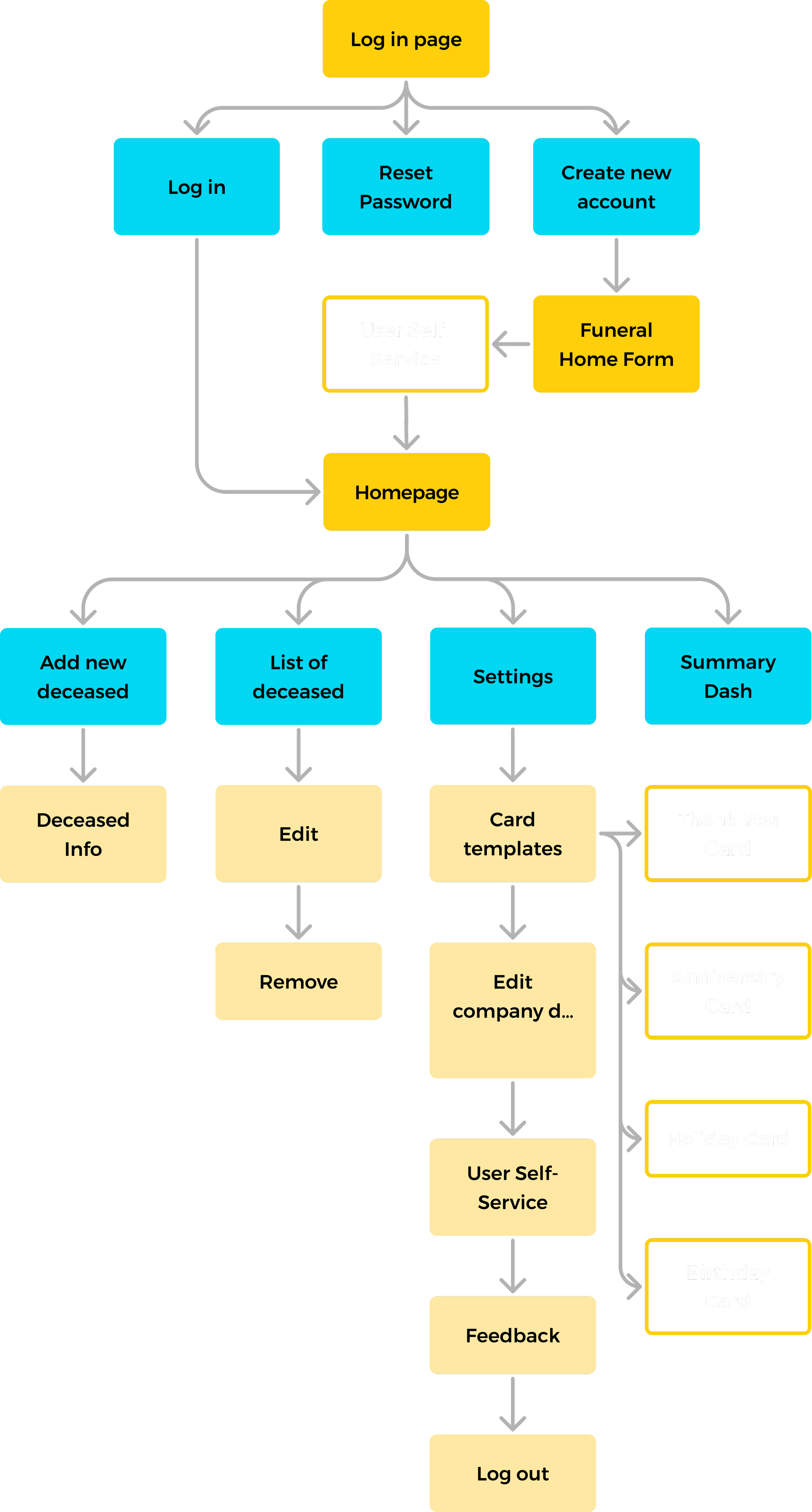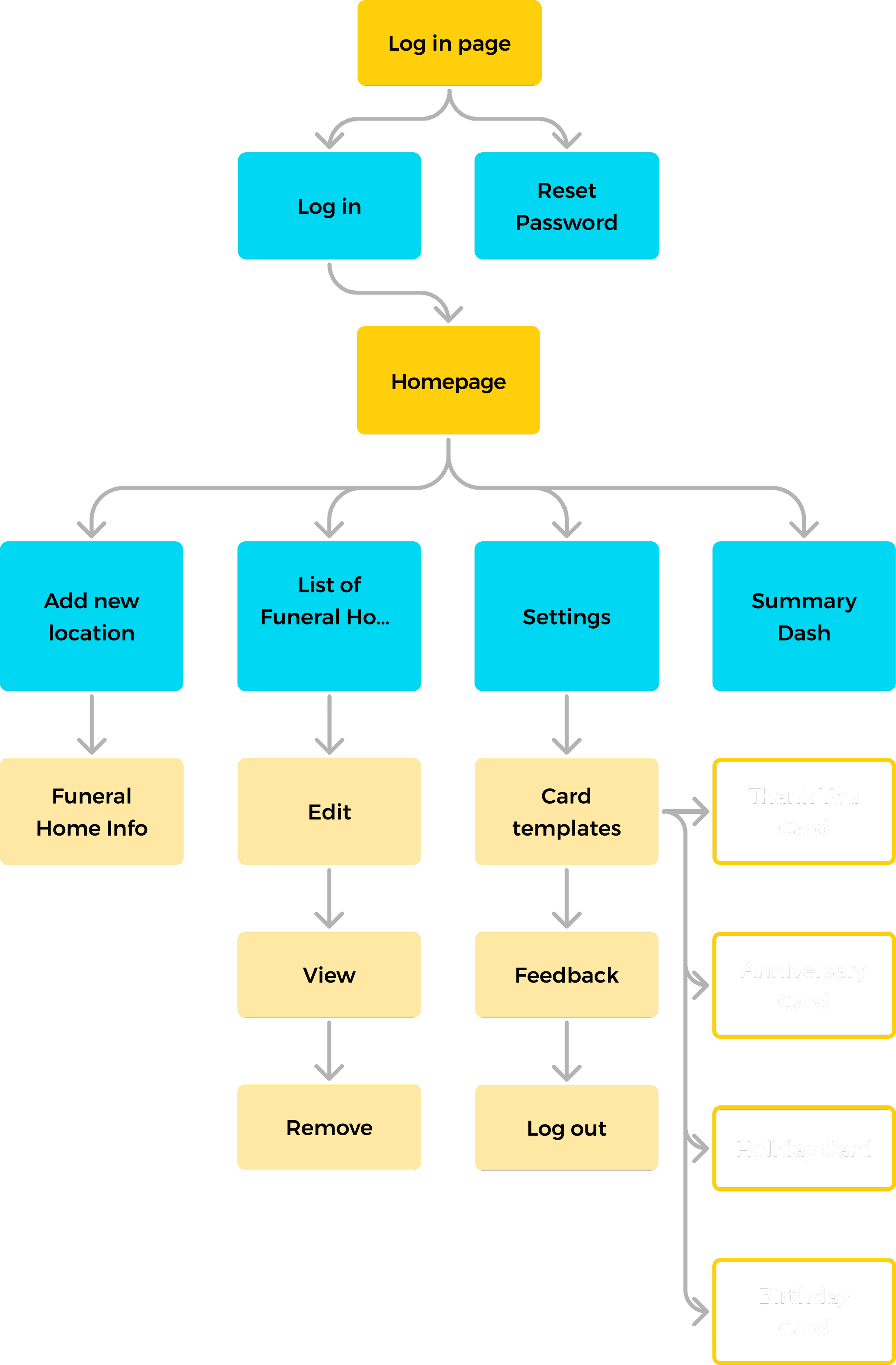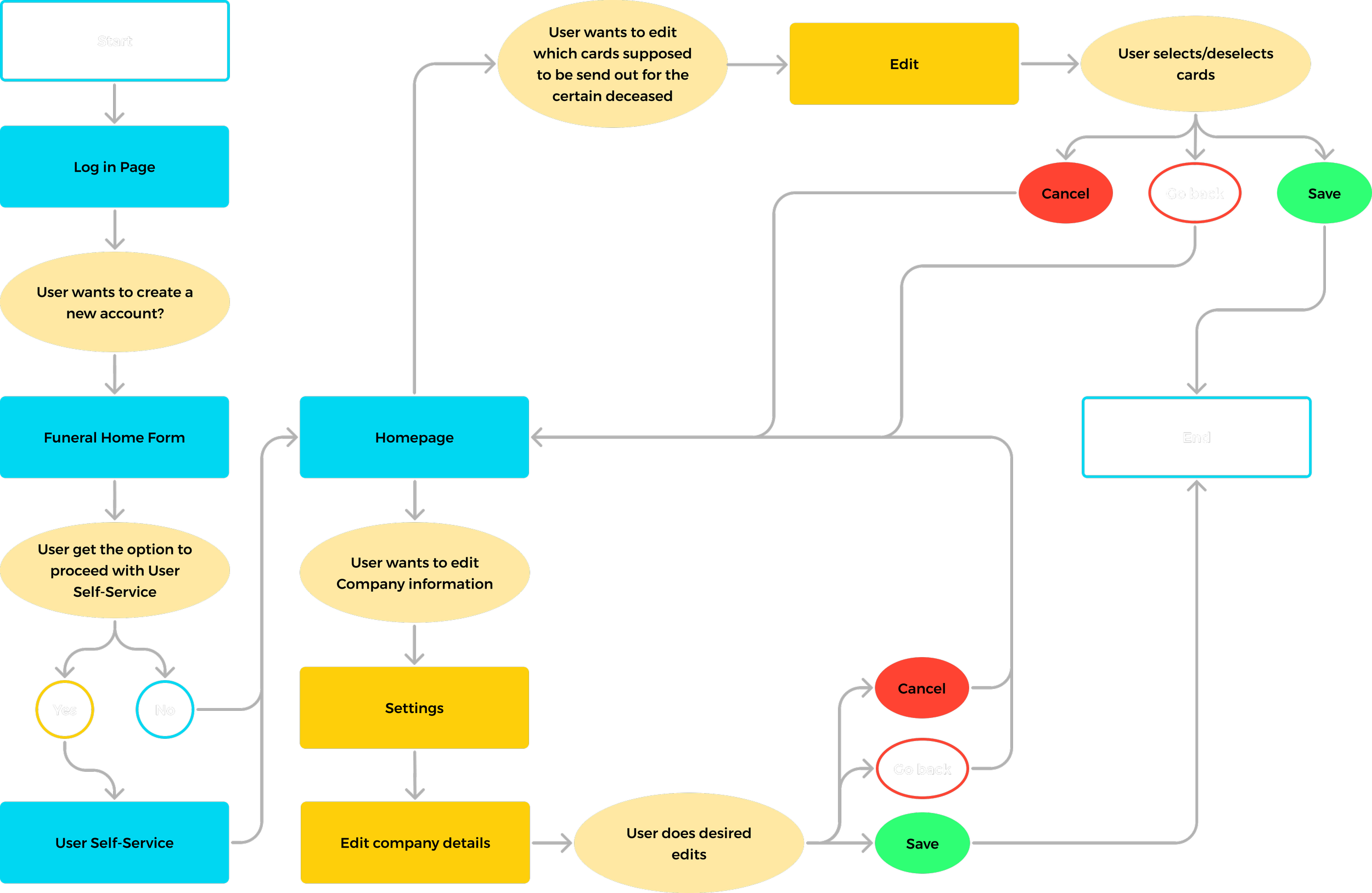
Soft Touch
CRM program for Funeral Homes
About the Project
Preened Funeral Programs operates a piece of home-grown software, known as "SoftTouch" to their clients, which acts as a platform/CRM program for Funeral Homes across the US that gives those funeral homes the ability to schedule templated letters to recipients who are connected (mostly related) to a recently-deceased person who had a service at the funeral home (client). These letters offer a nice "touch" in that they are offerings of condolences and reminders that the deceased are not forgotten. The main, underlying purpose of the letters is to keep the funeral home "top-of-mind" to the potential customer, especially for referrals. Recipients of these letters then in turn are able to tell acquaintances what a good, thoughtful experience they had with a funeral home and thus create word-of-mouth marketing. The letters are essentially a low-cost means of direct-mail marketing that is personalized with a funeral home's logo and a message to that recipient.
Responsibilities
UX Research
UX/UI Design
Quality assurance
Deliverables
User Personas
Sitemap
Flow Chart
Sketches
UI Mockups
Prototype
Length
2 weeks
Tools
Figma
Illustrator
Photoshop
Flow Chart
The platform mentioned above is two-fold. There is a "server" instance and a "web" instance. The "server" instance essentially is a desktop app located on an outdated Windows server that allows multiple users to log in and manage these funeral home clients and the templates they have for mailing out. This desktop app is built on what appears to be an early version of Visual Basic/C# .NET and probably uses SQL 2002/2005 as the persistence model, hosted almost certainly onsite. The source code is unavailable and the original author/developer is unavailable (deceased I believe) as well.
The "web" instance is where users (funeral home clients) log in and add their records (recipients who would receive future letters). As is the case with older software, these two applications don't share data in real time and are "synched" using import/export commands with flat files. The volume of data is not tremendous so files can be transferred, but large enough that there are timeouts when ingesting the information. Users are added manually with an email workflow, thus creating a much slower process than any self-service workflow would.
The main task is handling the printing integration, which is essentially an export from the "server" application. This consists of a flat file with contact information and a designator of a template to use, suggesting that the printer has prior knowledge of these templates. These are then printed by the printer and sent to the recipient whose contact data is contained with the contact data on the file. These are the "mailouts" that the survivors of the recently departed receive on several occasions such as an anniversary or the deceased birthday. The author/developer of this application is deceased and the source code is also unavailable.
The main issue here is that these two programs now, along with being outdated, completely lack any kind of support. Should a system failure occur, the business would be without a major platform and be unable to add new clients, who then would be unable to use the system. With the outdated issue, the time is coming very soon where either vendor (of the hosted website) or the OS (in the instance of the "Server" application) can no longer run either piece of the software, making it an untenable situation.
Swot Analysis
Strengths
Good client base, meaning PFP is not operating from scratch. These existing funeral homes have been in business for decades and should remain stable/loyal.
Good Printing knowledge/relationship. This is something other competing software/vendors would have trouble overcoming.
Other software owned by PFP compliments this platform.
Weaknesses
Outdated technology.
Outdated UI causes a poor experience.
Some data is repeatedly put in by clients instead of being shared by multiple records and put in once.
Users need to be put in manually by PFP, making the experience less seamless.
Lack of reporting is ideal since both clients and admins would love to know the return on investment (though hard to measure).
Lack of integration with other software they own.
Opportunities
Social media integration for memoriam-style postings (which could be measured and would be broader than direct-mail).
The ability for funeral homes to add pictures to letters of the deceased (though printing is costly).
Integration with other PFP-owned software.
A feedback loop where users can make suggestions and give feedback on features.
Printing integration to API rather than file-based.
Automated "hands-off" capabilities, instead of running export/import jobs, jobs would be scheduled to do the same.
Having one application that shares data rather than two where data is synched.
Delegated access model would allow Clients to add "sub-users" instead of PFP doing this.
Threats
Outdated software becoming obsolete
Users leaving/not adopting due to outdated user interface (in particular younger marketing persons who are used to seeing more modern-looking software)
Lack of support means a fatal error could be catastrophic
Personas
After gaining feedback from my user interviews and research, I created a key user representative with the characteristics that all interviewees share, which are my personas Gwen Anderson, Miranda Lea, and Sarah Jones.
Admin
Name: Gwen Anderson
Age: 57
Occupation: Director of CRM and Aftercare
Family Status: Married with two adult children
Gwen, Director of SoftTouch and NavCare at PFP, is a dedicated and experienced employee with a background in managing paperwork and program implementation. Her goals include optimizing service delivery, streamlining processes, and supporting agents. She is proactive in staying updated on industry trends and seeks to enhance the customer experience. While juggling multiple responsibilities, Gwen can find administrative hurdles and underutilization of programs frustrating. In a recent scenario, she addressed agents' challenges, provided additional training, created a guide, and gathered customer feedback to further improve the program. Gwen's personality traits include being organized, detail-oriented, a problem-solver, and a collaborative communicator.
Soft Touch Users
Name: Miranda Lea
Age: 29
Occupation: Funeral Home Administrator
Family Status: Single
Miranda, a funeral home administrator, is dedicated to providing excellent customer service during families' times of need. With three years of experience, she manages administrative tasks, processes paperwork, and utilizes SoftTouch software for funeral arrangements. Miranda's goals involve efficient and accurate handling of administrative responsibilities, allowing families to focus on grieving. She prioritizes continuing education to enhance her skills and stay updated with industry trends. Challenges for Miranda include navigating software systems, managing high volumes of paperwork, and balancing emotional demands with professionalism. Her personality traits include being detail-oriented, organized, a problem-solver, and a clear communicator. In a recent scenario, Miranda carefully entered accurate information into SoftTouch software, generated necessary paperwork, and coordinated effectively with funeral directors and staff members. She maintained professionalism, empathy, and a focus on efficiency throughout the process.
Recipient Users
Name: Sarah Jones
Age: 65
Occupation: Retired Teacher
Family Status: Widowed, with two adult children and three grandchildren
Sarah, a retired teacher grieving the recent loss of her husband, is seeking to arrange a meaningful and dignified funeral that honors his life and wishes. With a wide circle of supportive friends and family, she wants the funeral to be a celebration rather than a somber occasion. Sarah is also mindful of the funeral's cost and desires good value. She feels overwhelmed by the planning logistics and finds it difficult to focus due to the emotional toll. Concerns about her grandchildren's well-being during the funeral also weigh on her. Sarah's caring, compassionate nature values family, friends, and community. As a detail-oriented planner, she appreciates organization and control and finds creative expression through art and music. In a recent scenario, Sarah meets with a funeral director who attentively listens to her needs, providing various options and packages. The funeral director advises on personalization and incorporating elements that reflect her husband's life and interests. Sarah feels a sense of relief, grateful for the guidance and compassionate support from the funeral home.
Sitemap
I illustrated the hierarchical relationships between different pages and sections, highlighting the flow of information and navigation pathways based on thorough analysis and understanding of the product. I wanted stakeholders to understand the overall structure of the product and how its various components are interconnected.
Admin
Funeral Home User
User Flow
It's important to note that the user flow depicted in this section is based on research, analysis, and an understanding of user behavior. While efforts have been made to accurately represent the user's journey, individual experiences may vary, and there may be alternative paths or variations in user behavior.
Admin
Funeral Home User
Sketches
Referring to my sitemap and user flow, I presented sketches early in the design process. Stakeholders gathered feedback and make necessary adjustments without investing excessive time and effort in visual design. Sketches helped me to facilitate discussions around the fundamental aspects of the user interface, such as information hierarchy, content prioritization, and overall user flow.
UI Mockups
These mockups reflect the culmination of a design process that prioritizes aesthetics and user-centric design principles. The attention to detail and seamless integration of visual elements aim to elevate the user's perception and strengthen their connection with the product. Alongside new hi-fidelity mockups, I also included the previews of the old design that has been redesigned.
Old
New
Card Templates
Addressing stakeholder requests, one of the tasks assigned to me was the creation of a template for sending out cards. Given the prevalence of social media in our modern era, I was further tasked with adapting this template to align with the four most widely used platforms: Facebook, Instagram, Twitter, and TikTok. Notably, these card design files would be automatically adapted and delivered to the intended recipients via email, in addition to the physical card being sent to their mailbox. This integration seamlessly combines the digital and physical realms, ensuring that heartfelt messages reach recipients through multiple channels for a more comprehensive and meaningful communication experience.
Prototype
I designed prototype with careful attention to detail, incorporating the visual aesthetics, layout, and interactive elements that closely resemble the final product. It provides stakeholders with a hands-on experience, enabling them to provide feedback, validate design decisions, and identify areas for improvement.



















